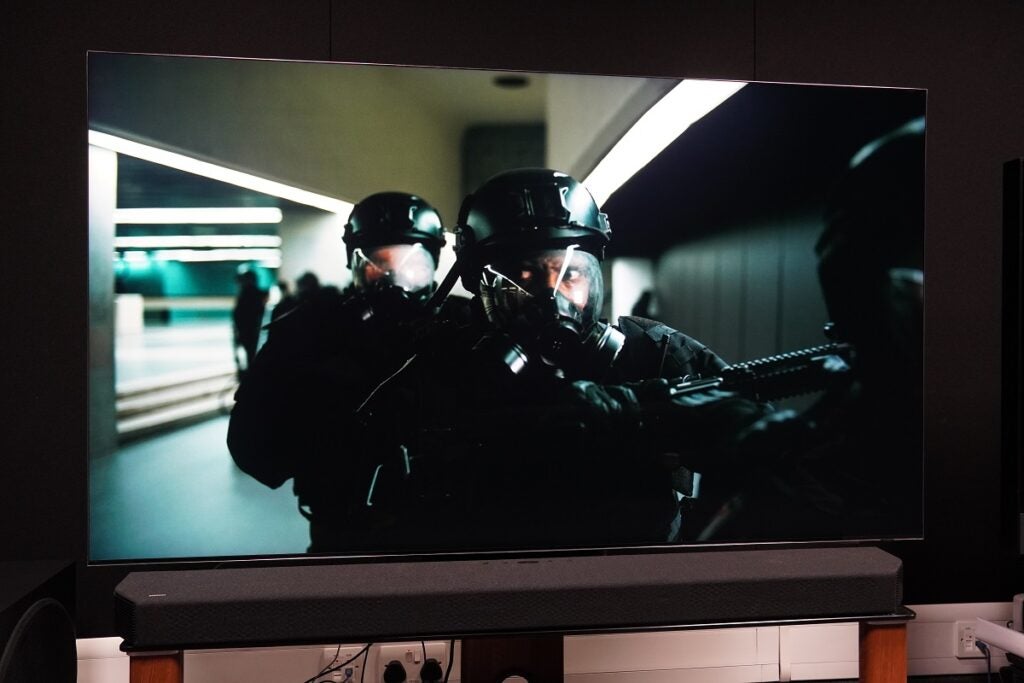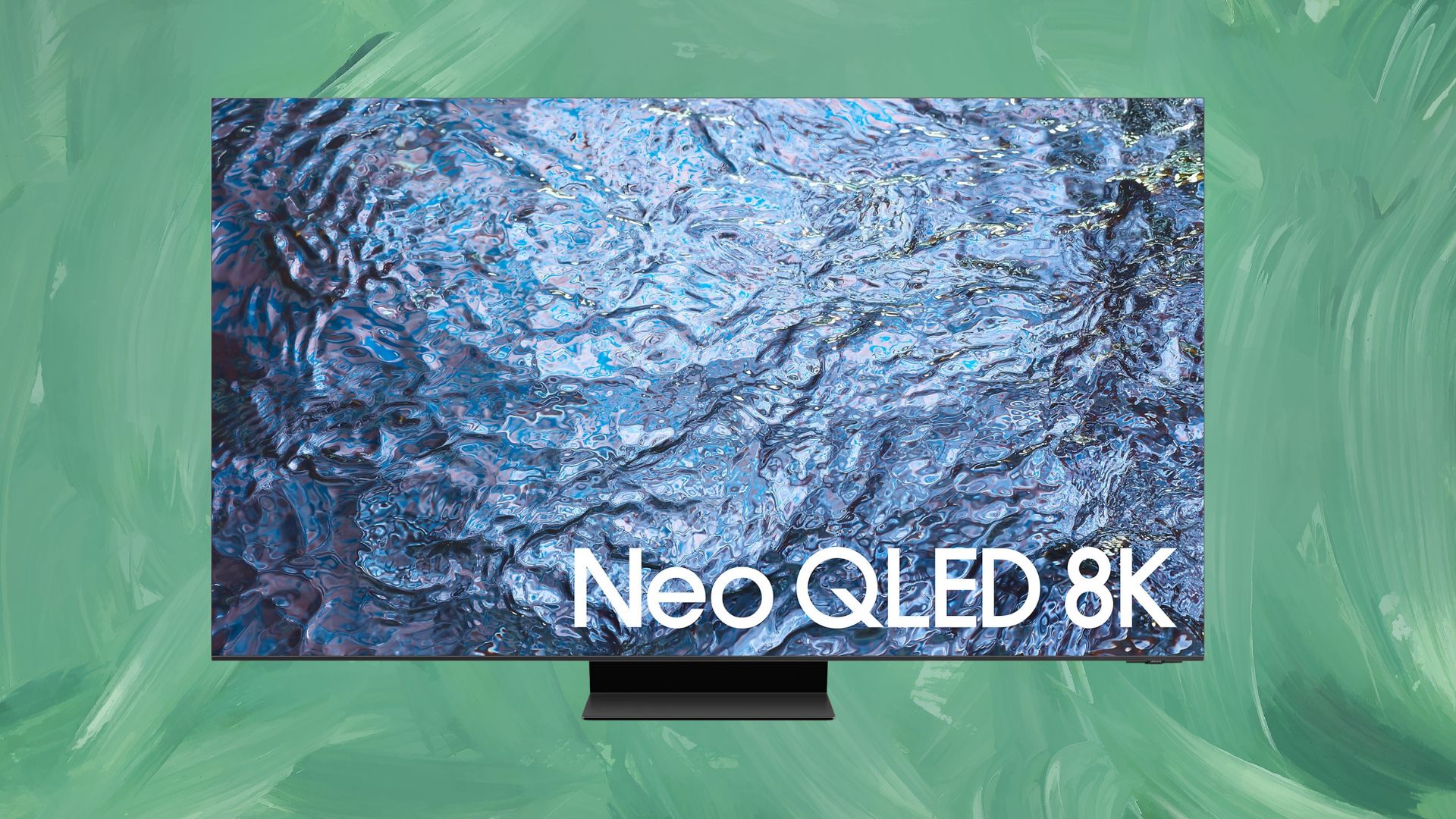What is 8K? Everything you need to know

If you’ve perused the top end TV section of any big tech store over the past couple of years you may have stumbled upon the term 8K.
And at first glance, and considering the price of top end 8K TVs, you may well assume that this is a step up on 4K sets. At a technical level that’s certainly true. But if you were to ask us if they’re actually worth buying in the current market, based on experience testing the latest sets, we’d have to say “it depends” as there are a variety of factors you should be aware of before investing in 8K. In this guide we’ll detail them and everything else you need to know about 8K.
What is 8K TV?
8K resolution is a resolution that goes beyond 4K. Specifically it’s a resolution of 7680 x 4320 pixels, which adds up to 8,000,000 pixels. As you can see in the diagram below, this is four times the resolution of 4K TVs and five times the resolution of Full HD resolution.
The resolution is high enough to produce a very detailed image, but it’s also high enough to look very sharp even when you’re looking at it up close. You can clearly make out the details, lines, and colors in 8K video, but you might want to sit a bit distance from the screen to fully appreciate the detail.

What 8K TVs have launched?
Now many of you might be thinking “that’s great, but what can I actually do with 8K?” The first 8K TVs launched in May 2018. 8K TVs can be used to show you very detailed images. You can see a list of some of the 8K sets we’ve reviewed in the list below.
- Samsung QLED Q950TS
- LG OLED77ZX
- Sony KD-85ZG9
- Samsung QE82Q950R
- TCL 8-Series Mini-LED 8K TV
- LG OLED88Z9
- LG 75SM9900
- Samsung QE85Q900R
- Sharp 120-inch 8K TV
- Sony KD-75ZH8
- Samsung QE75QN900A
- Samsung QE65QN900A
Though 8K TVs get the most attention at the moment, the resolution has been used on professional grade monitors for quite some time. Many professionals use 8K monitors for engineering and design tasks. Engineers can use 8K monitors to check their designs, while designers can use them to see how their creations will look like in reality. Many VR designers also use them when crafting their works.
How much does an 8K TV cost?
For the 85-inch model, Samsung’s Q900R was initially available for £15,000. That wasn’t unexpected, considering how new the technology is.
The expectation is that 8K TVs will become cheaper over time, similar to how 4K TVs have become affordable. Samsung’s 2nd-gen Q950R has followed that logic with a £10,000 RRP on release, dropping down to £8,999 in recent months.
The 75-, 65- and 55-inch versions sell for £4,499 and £2,999 and £2,499 respectively. Those prices are within the range of the top-end 4K sets.

LG’s 88Z9 8K OLED costs £30,000. Despite that, it offers the best performance of all 8K TVs released. There is a much cheaper 8K TV from LG in the 75SM9900 at £5,999, but the performance is rather more average.
In 2019, Sony launched two 8K TVs in the KD-98XG9 and KD-85ZG9 8K TV. The former went on sale for an eye-watering £84,999.
The 85-inch ZG9 initially sold at £13,999, but can be found for less than £10k now. The ZG9 range is set to continue on for 2020, with the new ZH8 sitting below.
Benefits of 8K Resolution
Based on our experience reviewing them, the best thing about 8K TVs and monitors is that they improve image clarity. You will notice this when you’re using one of these displays.
The images will be much clearer than those seen on 4K TVs and monitors. On content playing at the resolution 8K TVs let you see details in your images or videos that weren’t visible before. For example, you might be able to see wrinkles in people’s faces or fine details in your designs or artwork.
Are any movies or TV shows in 8K?
Though many shows haven’t yet made the jump to 4K, there are some movies that are being released in 8K, but not many.
For example, Black Panther is one of the first movies to be released in 8K resolution. And yes, you can watch it on a fancy 8K display. Before that, the first 8K shoot happened in 2017’s Guardians of the Galaxy Vol. 2 which was shot on RED’s 8K Vista Vision camera, but was inevitably downscaled to 2K for its cinema release.
There are also some TV shows that have been released in 8K, but again, not many. More often than not, these are special events that are broadcasted in 8K.
For example, Japan ran 8K demo broadcasts on its public TV channel NHK back in 2016 and subsequently launched a dedicated 8K TV channel in late 2018. This will be where Tokyo’s 2020 Olympic Games will be broadcasted.
The public broadcaster also has showrooms to show off the format, presenting a native 8K version Stanley Kubrick’s 2001: A Space Odyssey scanned by Warner Bros.
Brazil showed some of the 2018 World Cup in 8K at Rio de Janeiro’s Museum of Tomorrow. The tech support required to make it happen was far from straightforward, so it’s not exactly ready for mass consumption just yet.
Outside of this, at the moment 8K is mainly used by companies and organisations to showcase their products and services in a very detailed manner. If you buy an 8K TV you’ll generally have to rely on upscaling to play content at that resolution.

From a gaming perspective, the PS5 will support 8K graphics. Microsoft has also implied that the Xbox Series X will have some form of 8K compatibility. But we’re yet to see any content to support either platform at this resolution.
What is 8K TV upscaling?
With so little content currently available, 8K is currently about upscaling. From what we’ve seen, the results are impressive.
Samsung’s Q950R uses the company’s new Quantum Processor 8K chip, which uses ‘AI upscaling’ to boost lower-res footage to 8K.
It uses complex algorithms to recognise patterns in images and calculate the extra pixels required to fill in the gaps that 4K (or even HD) is missing. The chip uses a huge image database, which Samsung says is constantly updated to keep it as accurate as possible.
Sony uses its vast experience in the upscaling arena to bring non-8K pictures up to standard. Searching its 8K database for reference images, it can also call upon native 8K content from its Sony Pictures film studio, and information from its Sony CineAlta cameras to inform what 8K content should look like.
So there you have it. You may not feel as if you need 8K TV right now, but the technology is coming, slowly but surely.




